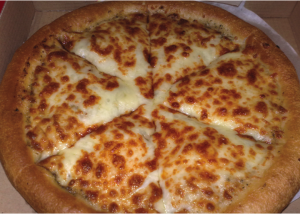
It seems like every week there is a new story about 3D printing—astronauts on the ISS printing specialized tools, doctors talking about advances in 3D organ printing, and public safety advocates worrying about the threat of 3D printed weapons.
Like every other amazing scientific breakthrough we’ve had over the past two decades though, 3D printing has become a little… ordinary. We have a functioning 3D printer in the Killam library, and I haven’t once used it to fabricate a space wrench, manufacture a spare ear, or print off an arsenal of plastic pistols to arm my cyberpunk revolutionary movement. The initial wow factor has worn off, and as it turns out, it’s still a lot easier to buy our space wrenches at Home Depot.
Enter 3D-printed food.
I woke on Friday morning to a breathless Facebook message from a friend. The link he provided me led to a video posted on IGN.com, in which two of their gaming editors attending the Consumer Electronics Show fall over each other raving about their experiences taste-testing 3D printed pizzas and cookies.
This woke me up. Cookies and pizza happen to be the two fundamental pillars of my diet, and I know for a fact that I am not the only busy student looking for the next big revolution in slothful living.
Converting the average student to 3D printed foods will be harder than simply producing the hardware at an affordable price though. There is an entire market that has been locked in a half-century arms race to produce the simplest food-like products imaginable. One does not simply replace the squeezable foods industry without a fight.
Take oven fresh cookies. Pillsbury sells pre-made cookie dough. Open the plastic, slice the log into even portions, and bake for ten minutes. Or, in what may be the single most damning exhibit in the case against our generation, for a little bit extra they also sell pre-sliced cookie dough—a must-buy for those who would rather starve than subject themselves to the grueling task of cutting through a supple roll of dough in twelve places.
It’s clear then that 3D food printers are going to have to bring their A-games if they want to compete with the options already on the market. The following are a few areas where this new technology could distinguish itself:
Cost
I’m cheap. I’ll admit it. When I have the free time, I will walk half an hour through ice-storms, snow drifts, and Category-3-or-lower hurricanes to pick up my pizza rather than pay extra for delivery. Presumably, 3D printed food will make use of large quantities of “food inks” to produce their creations. If I can bulk purchase these ingredients by the tub—or, dare I dream, by the vat—and the price works out to a savings over the currently available options, I’ll be intrigued.
Health
The one major downside to most convenient “food” products aimed at students is that they tend not to be the healthiest of options…or so I assume. I tend to plug my ears and hum Limp Bizkit tunes every time someone tries to tell me how my Pepsi Max and frozen burrito combo is lowering my IQ, coating my arteries with a thick layer of flubber, increasing my risk of trench rot, etc.
It isn’t that I don’t care—it’s that I know my particular mix of poverty and unwillingness to peel vegetables leaves me condemned to consume products that can’t legally describe themselves as food. If 3D food printers allow us to create healthier alternatives using recipes downloaded from the Health Canada and Jamie Olivers of the world, that could provide them with a big advantage over products that have the words “cheez” and “froot” in their titles.
Clean up
Perhaps the number one criteria I consider when planning out a meal is the number of dishes will I have to clean up afterwards. Homemade hamburgers and salad? Mixing bowls, skillet, dishes and utensils. Frozen chicken wings? The professionally lazy might skip transferring them to a plate, but they’re going to need to dirty a baking sheet at the very least. Even an extra-large delivery pizza eaten straight out of the box over several days still leaves you with an unwieldy cardboard monstrosity that you have to tear up and dispose of properly.
This is where 3D printing could be a complete game changer. With the ability to generate essentially any structure we can imagine, what is to stop it from tearing down the last great obstacle in the way of a purely hedonistic dining experience—of eliminating the need for the post meal clean up by creating edible dishes and utensils?
Craving an ice cream sundae? Have the 3D printer whip you up one served in a solid milk chocolate bowl, complete with a candy-cane spoon. Fancy a heaping helping of spaghetti? Enjoy it in a bread bowl, and deliver it to your mouth using an extra-crispy bacon fork (better print off a few extras, just to be safe).
If they can master the almighty triumvirate of cheapness, effortless health benefits, and edible dishes, the entrepreneurs behind the 3D printed food revolution will rightfully take their places as the new culinary gods of KD-binging, Mountain-Dew mainlining human garburators who haunt our campus duplexes and frat houses—at least until some bold new visionary invents a miniature drone that flies the food directly to our mouths.







